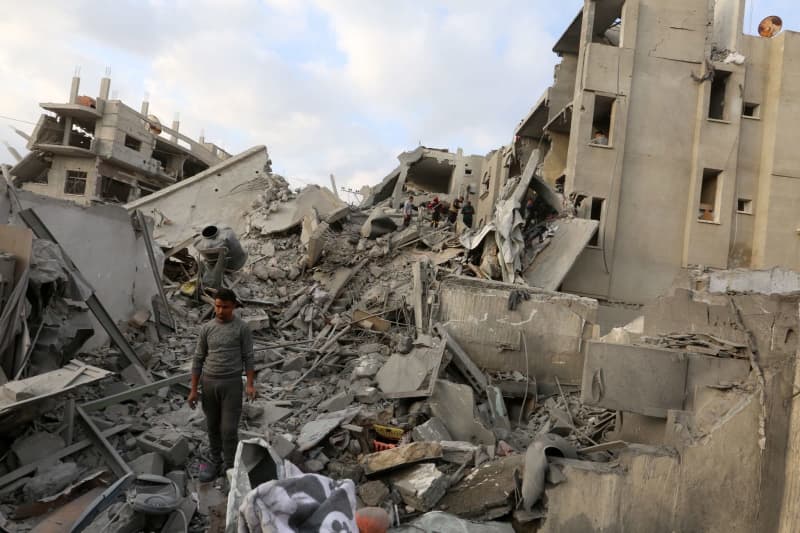The Israeli military announced on Saturday that its recent airstrikes targeted over 120 militant sites in both the Gaza Strip and Lebanon within the past 40 hours, marking a significant escalation in its military operations. The airstrikes focused on key installations associated with Hamas in Gaza and Hezbollah in Lebanon, specifically targeting weapons depots and rocket launchers. The Israel Defense Forces (IDF) provided updates on their ongoing operations, indicating that soldiers were executing limited, locally concentrated, and targeted attacks against Hezbollah positions in southern Lebanon.
The military claimed that these strikes aimed to dismantle the capabilities of Hezbollah, particularly in response to the group’s substantial missile launches into Israel. Among the reported casualties were two Hezbollah commanders located near the Lebanese city of Tyre; these individuals were allegedly responsible for coordinating and executing the firing of more than 400 missiles aimed at Israeli territory during the month of October. The IDF’s assertions regarding these commanders and their actions have not been independently verified, raising questions about the accuracy of the information being circulated.
Despite the targeted nature of the military operations, the airstrikes have raised concerns regarding collateral damage, especially among civilian populations in both Gaza and Lebanon. The civilian toll of these operations is frequently highlighted, as airstrikes in densely populated areas often result in unintended consequences. This aspect of the conflict underlines the ongoing challenges faced by military forces in conducting operations amidst civilian populations, a problem compounded by the region’s complex geography and densely packed housing.
As the situation develops, the humanitarian ramifications of these military actions become increasingly severe. The continuous cycle of airstrikes and retaliatory fire has exacerbated an already dire humanitarian crisis in the Gaza Strip and parts of Lebanon. Basic necessities such as food, water, and medical care are becoming increasingly scarce as infrastructure is repeatedly targeted. The humanitarian community has expressed urgent concern over the safety and wellbeing of civilians caught in the crossfire of this escalating conflict.
The international community has been closely monitoring the developments in the region, with calls for restraint coming from various quarters. Many countries and organizations have urged both Israel and Hezbollah to de-escalate tensions and prioritize the safety of civilians. The situation remains volatile as each side continues to assert its military capabilities in response to perceived threats, further complicating the prospects for a peaceful resolution.
In conclusion, the recent military actions taken by Israel against perceived threats in both Gaza and Lebanon highlight the ongoing complexities of the conflict, where military objectives often intersect with significant humanitarian concerns. The loss of life, including both militants and civilians, underscores the tragic consequences of warfare in densely populated regions. The need for a diplomatic solution becomes increasingly urgent as the cycle of violence continues, leaving countless lives at risk in this fraught and volatile region.

